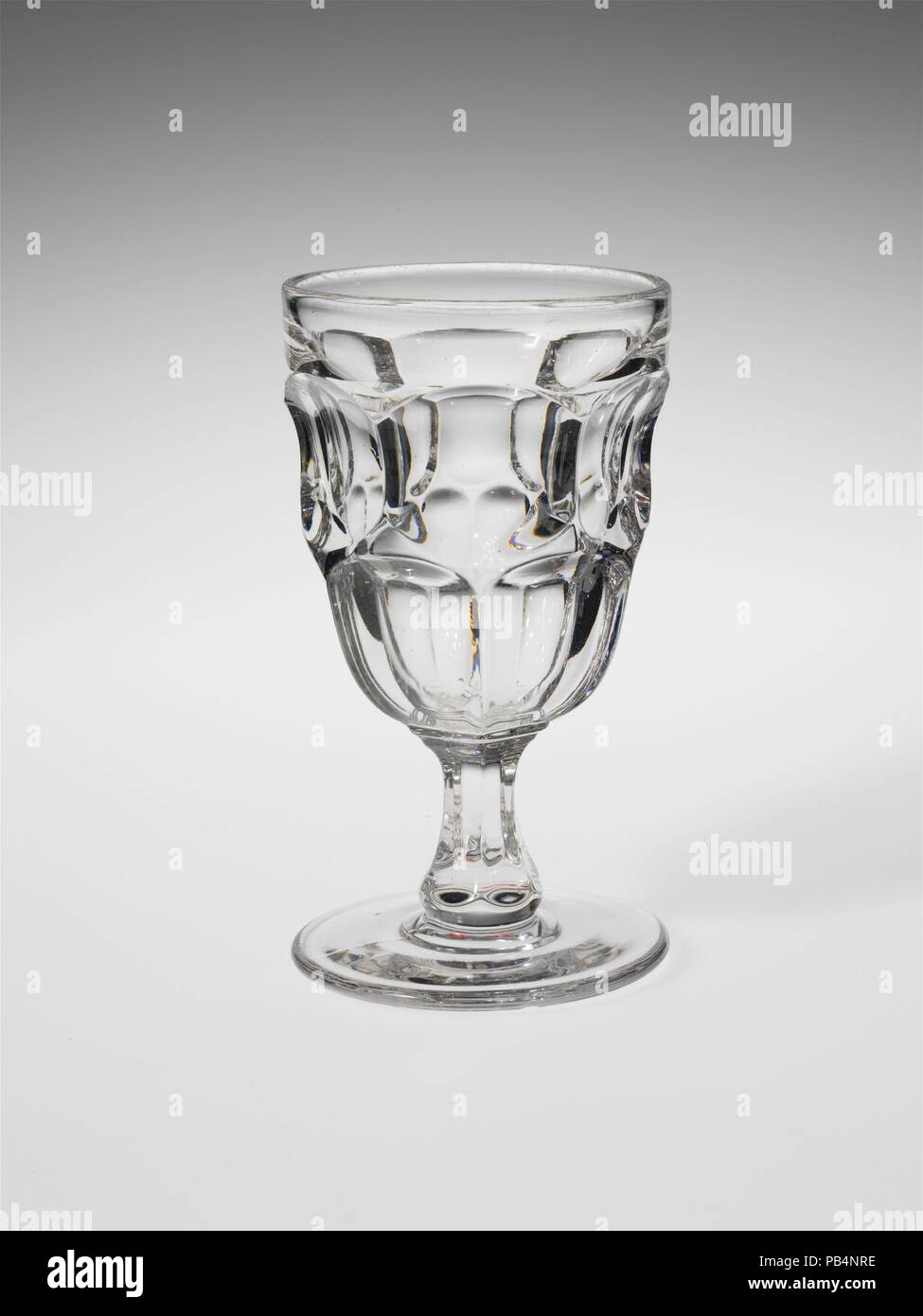Goblet. Culture: American. Dimensions: H. 6 in. (15.2 cm). Date: 1830-70. With the development of new formulas and techniques, glass-pressing technology had improved markedly by the late 1840s. By this time, pressed tablewares were being produced in large matching sets and innumerable forms. During the mid-1850s, colorless glass and simple geometric patterns dominated. Catering to the demand for moderately-priced dining wares, the glass industry in the United States expanded widely, and numerous factories supplied less expensive pressed glassware to the growing market. At the Exhibition of th

Image details
Contributor:
Album / Alamy Stock PhotoImage ID:
PB4NREFile size:
37.9 MB (539.1 KB Compressed download)Releases:
Model - no | Property - noDo I need a release?Dimensions:
3150 x 4200 px | 26.7 x 35.6 cm | 10.5 x 14 inches | 300dpiPhotographer:
AlbumMore information:
This image could have imperfections as it’s either historical or reportage.
Goblet. Culture: American. Dimensions: H. 6 in. (15.2 cm). Date: 1830-70. With the development of new formulas and techniques, glass-pressing technology had improved markedly by the late 1840s. By this time, pressed tablewares were being produced in large matching sets and innumerable forms. During the mid-1850s, colorless glass and simple geometric patterns dominated. Catering to the demand for moderately-priced dining wares, the glass industry in the United States expanded widely, and numerous factories supplied less expensive pressed glassware to the growing market. At the Exhibition of the Industry of All Nations at New York's Crystal Palace in 1853, for example, the New England Glass Company exhibited 130 pieces of one design, "consisting of bowls, tumblers, champagnes, wines, and jelly glasses." This object belongs to one such service. Although the glass manufactory is not known, the glassware is very typical of the large services that were very popular with America's middle class in the nineteenth century. Museum: Metropolitan Museum of Art, New York, USA.